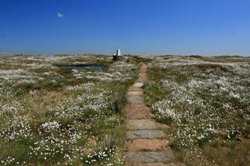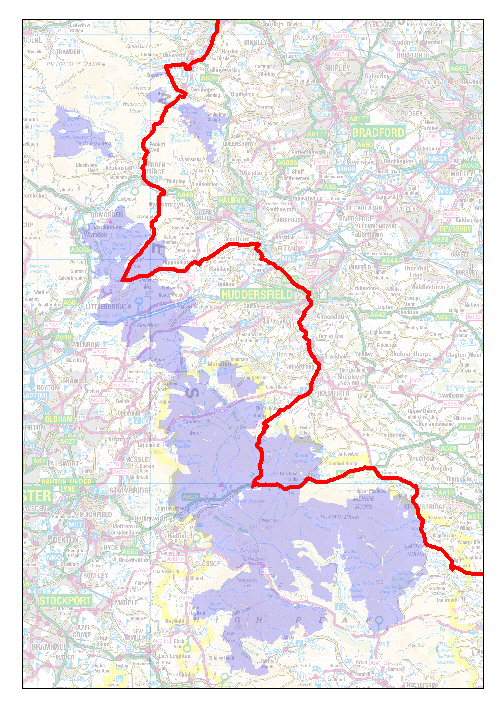The start of this year's Tour de France will pass through iconic moorlands of the South Pennines and Peak District National Park before heading for the end of the first two stages — known as the Tour de Yorkshire — in Sheffield. Since 2003, we have been working to bring new life back to these moorlands, repairing bare peat caused by more than 150 years of industrial pollution and wildfires that have stripped away the vegetation, leaving the peat layer exposed and vulnerable to erosion.
Stage1 of the Tour de France circumnavigates areas near Patley Bridge where we have been working to improve the condition of the land for our Yorkshire Water SSSI project.
- We have put up fences and walls to prevent overgrazing — part of the total of 1km of dry stone walling, 20 km of fencing and 1km of repairs we carried out in the past financial year.
- Trees have been planted to provide shelter and cover for birds — we've planted a total of 87,000 trees across all of our projects last year.

Stage 2 of the Tour de Yorkshire — from York to Sheffield — passes through areas we have been working on for the £5.5 million EU funded MoorLIFE project. Riders will cycle through Turley Holes and Rishworth before heading south to the highest point of the day - Holme Moss.
Black Hill lies close to the route on this stage of the Tour. We have been working here since 2003 — laying footpaths and renewing vegetation to return the desolate black peat landscape into a healthy moorland. In 2010 we began reintroducing sphagnum — a moss that helps new peat to form and is vital to keeping the moorland healthy.
We have produced a series of audio trails that cover the areas the Tour de Yorkshire will pass through:
- an exploration of the role of water in the landscape at Turley Holes
- the damage caused by moorland wildfires at Rishworth
- how sphagnum is bringing life back to Black Hill
- repairing damage from the industrial revolution with conservation work on Bleaklow
When the Tour de France passes through this landscape the cotton grass should be in full bloom — crowning the hills with fluffy white flowers that prefer to grow on wet moors. In the past twelve months we have installed 2,300 stone, timber and plastic dams to help re-wet the moors and planted over 130,000 plants, including cotton grass, bilberry, crowberry and cloudberry to help re-establish native vegetation across the Peak District and South Pennines.
Backing up all of this conservation and land management is work of our science team who are monitoring:
- water quality on Bleaklow
- vegetation regrowth, water levels and quality across 4 sites along the Tour de Yorkshire route for the MoorLIFE project
And it doesn't end there — we are giving local Moor Citzens and visitors the chance to take part in monitoring of the landscape along the route, including annual bird, butterfly and bee surveys as well as longer term environmental monitoring of the landscape by local communities with our community science project.

Stage 2 of the Tour de France route - our project areas marked in purple.
Though the riders may not have time to pause for thought about how this stunning landscape has been lovingly restored and conserved for the future, cycling fans waiting at the side of the road for their heroes to pass by will be able to enjoy the views.
So whether you view the race from the comfort of home or are lining the route of the Tour de Yorkshire, please spare a thought for all the effort that the Moors for the Future Partnership team has spent over the past eleven years to ensure that these landscapes are true moors for the future.